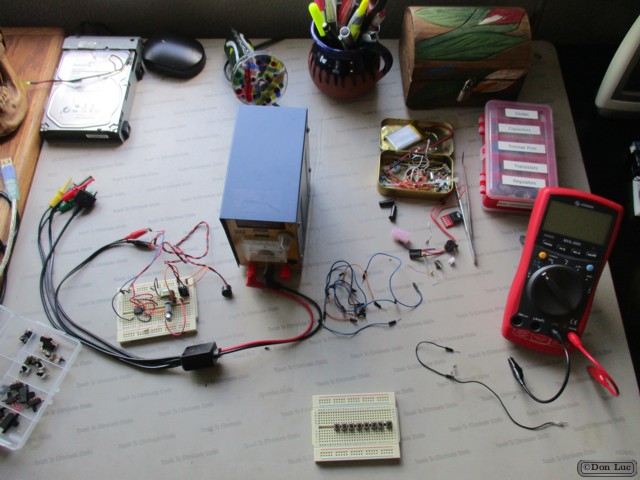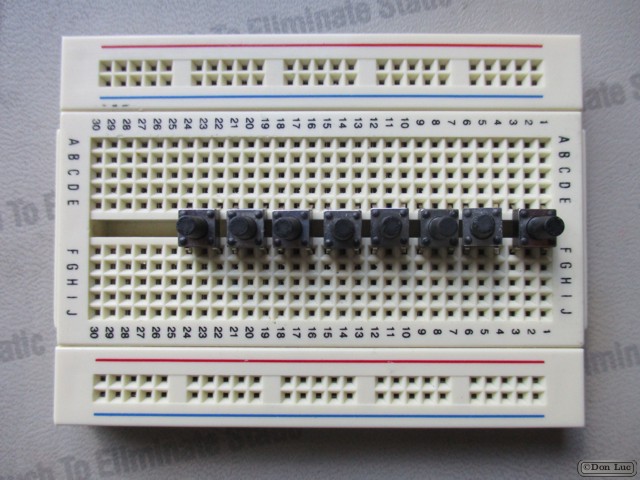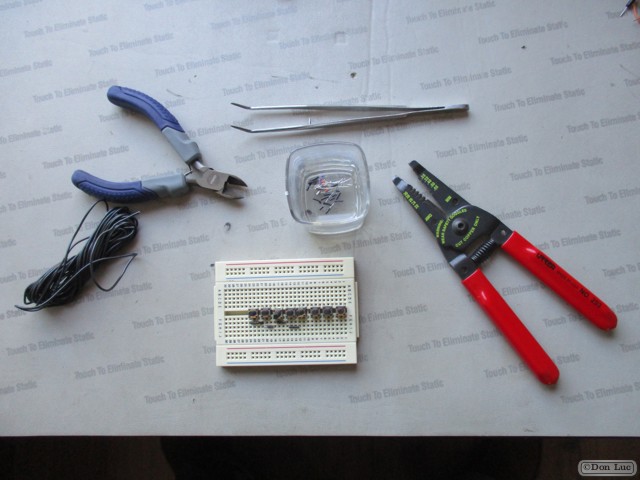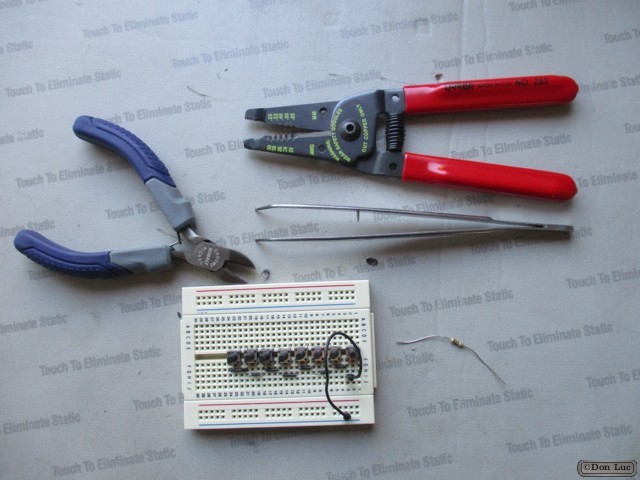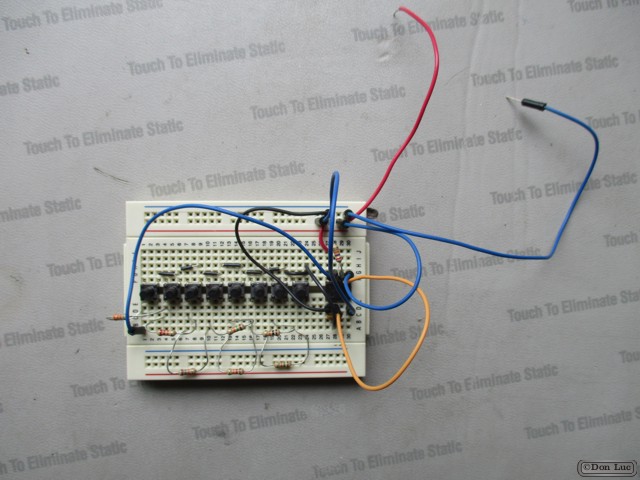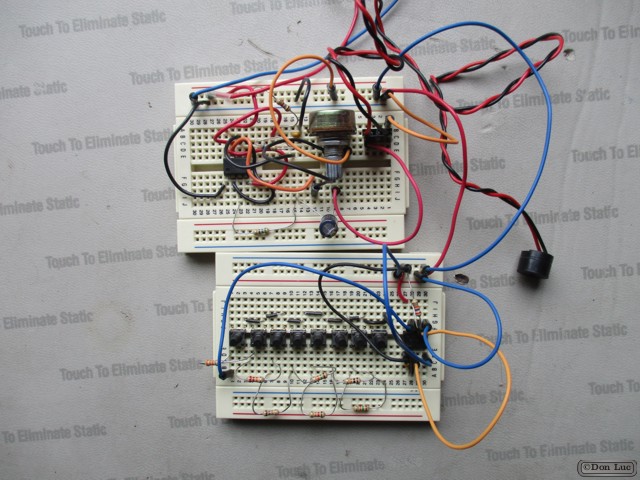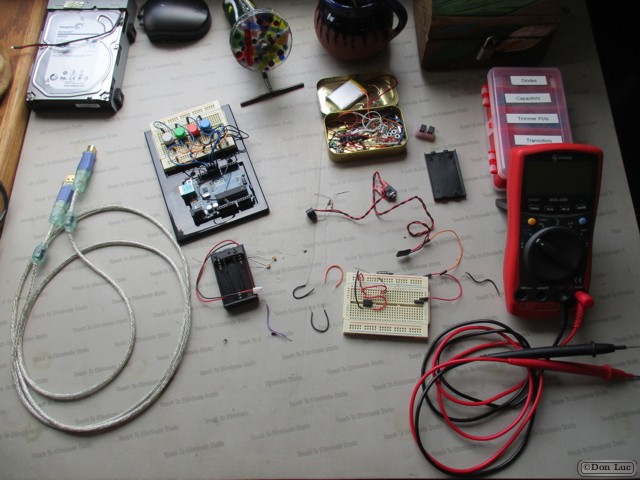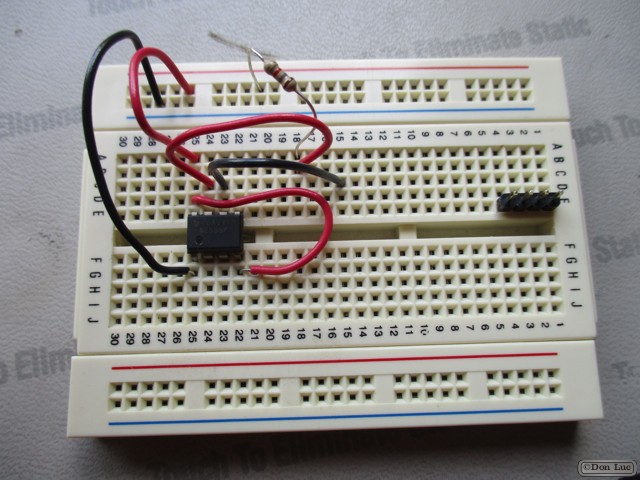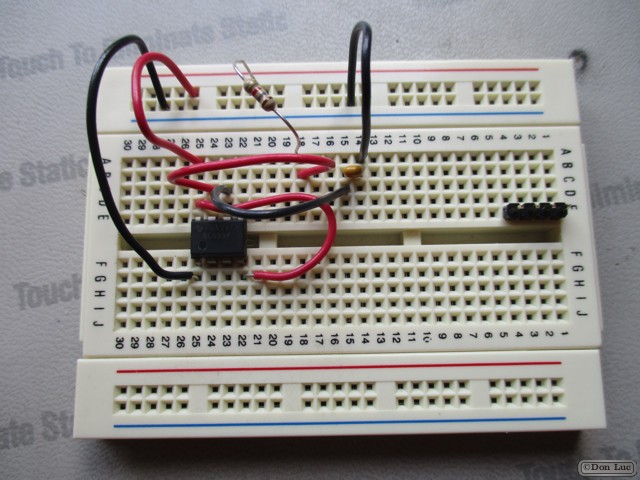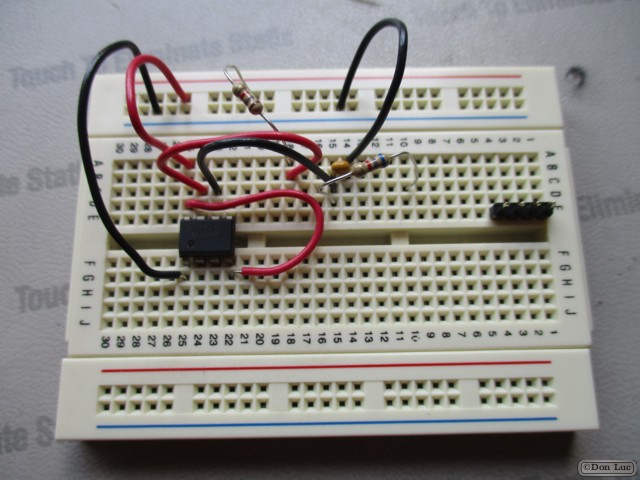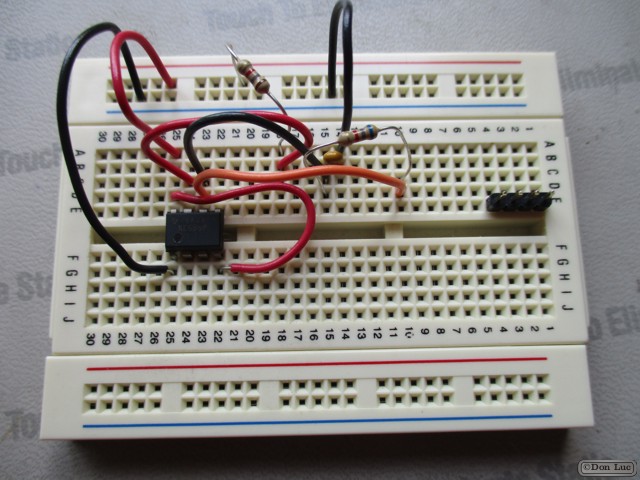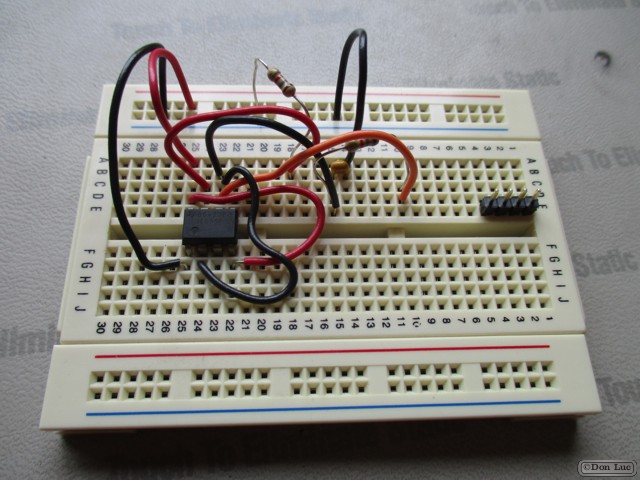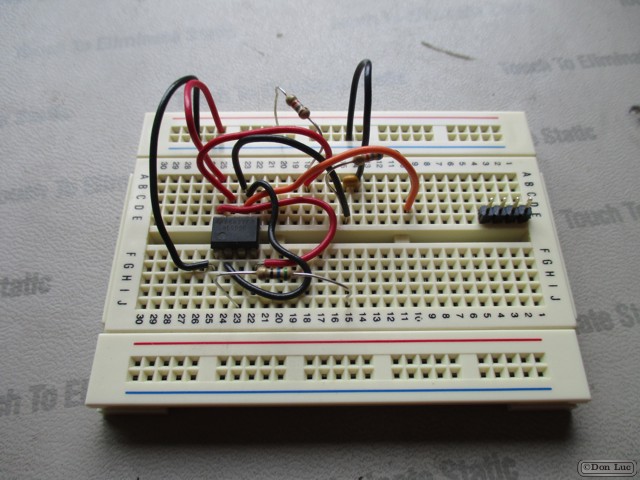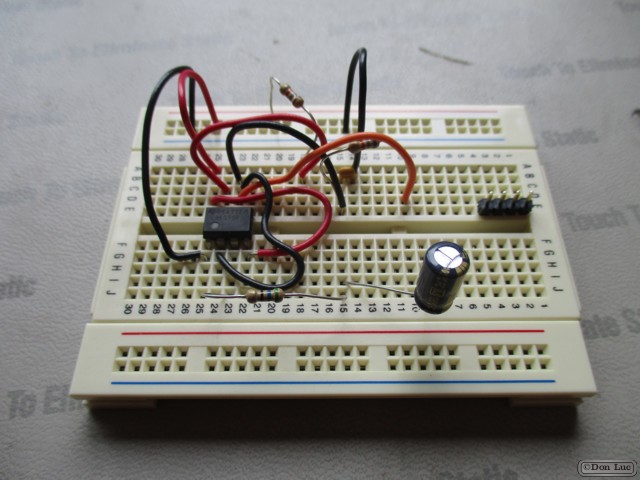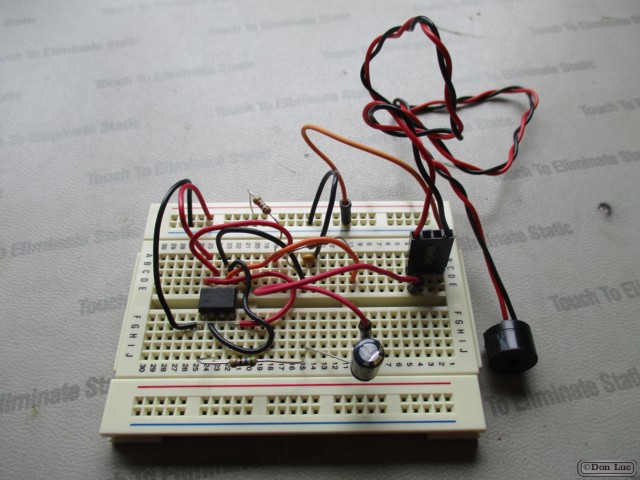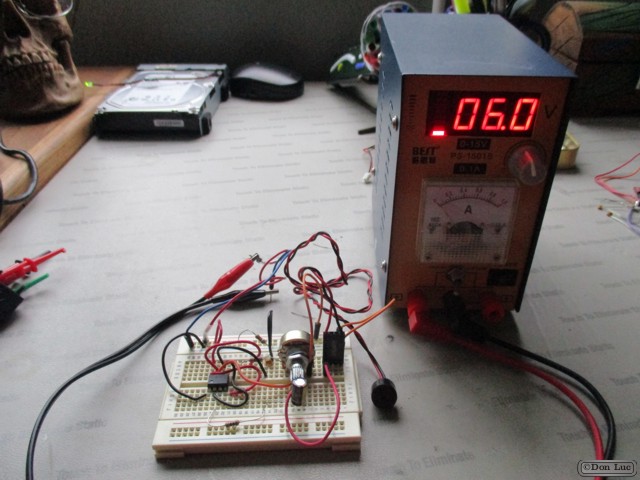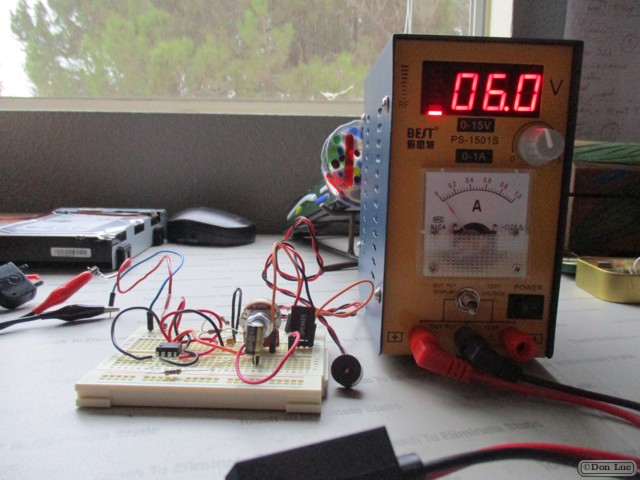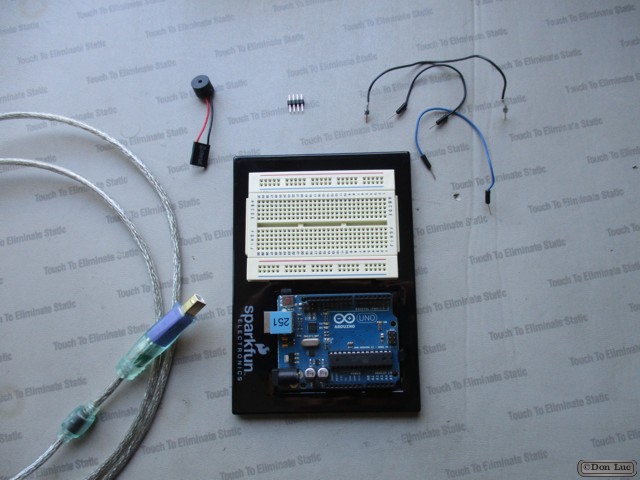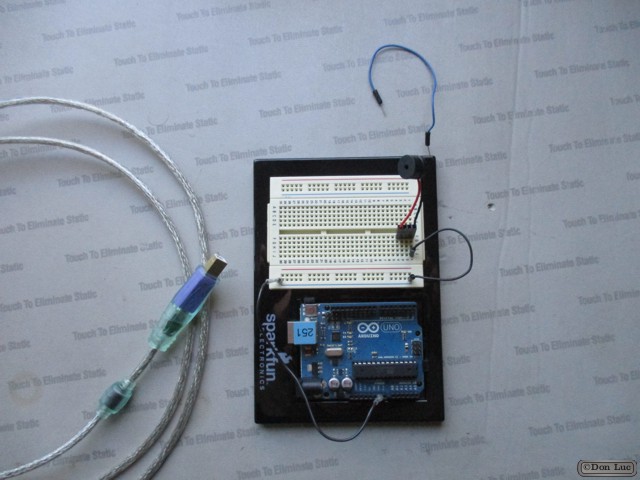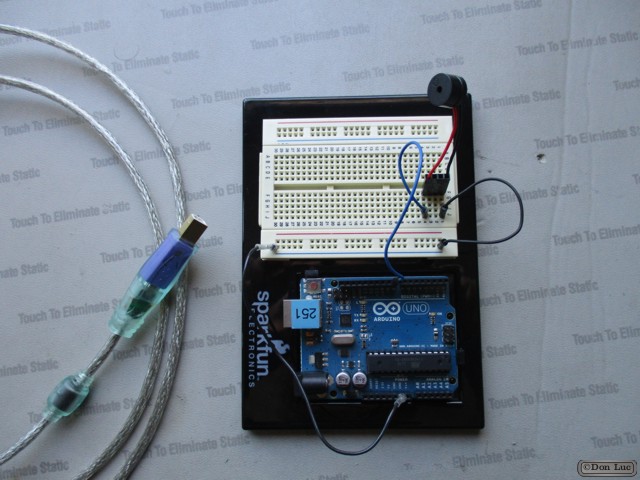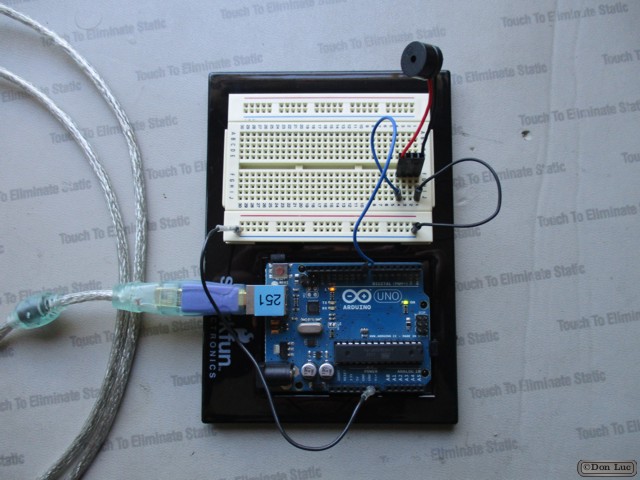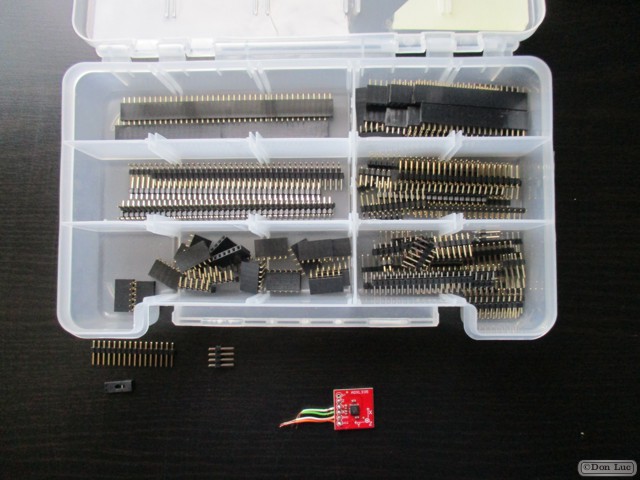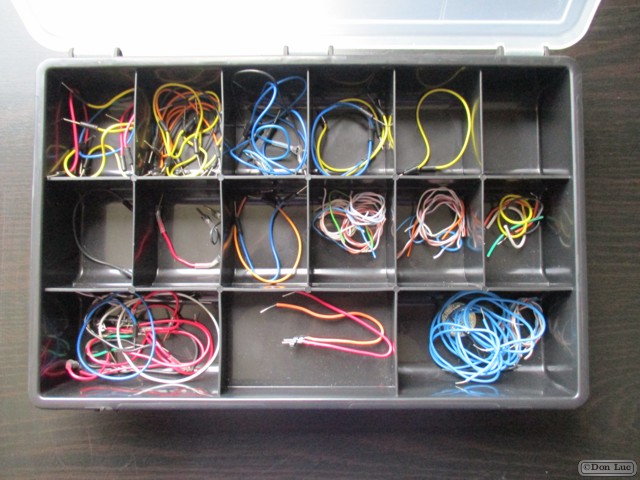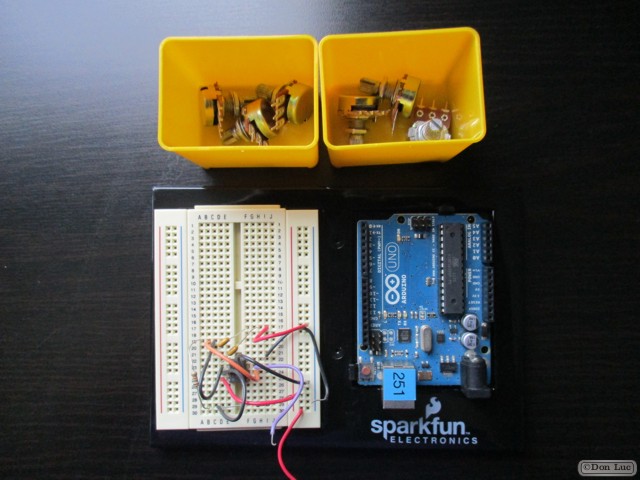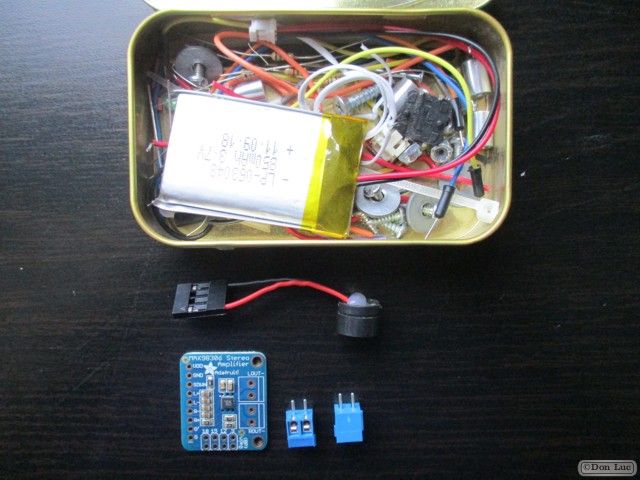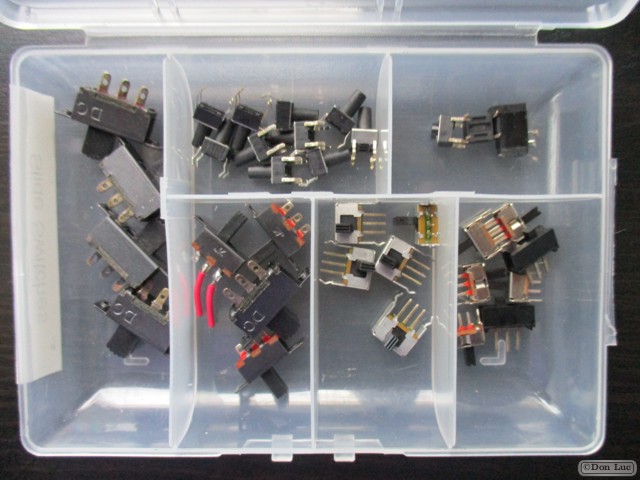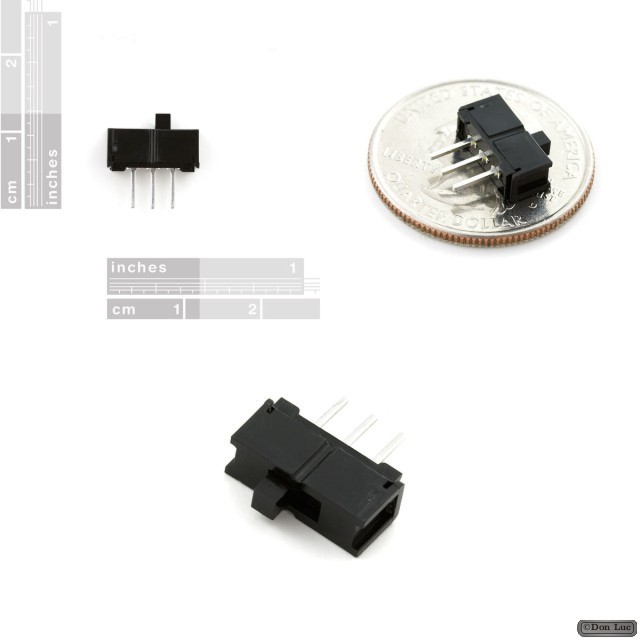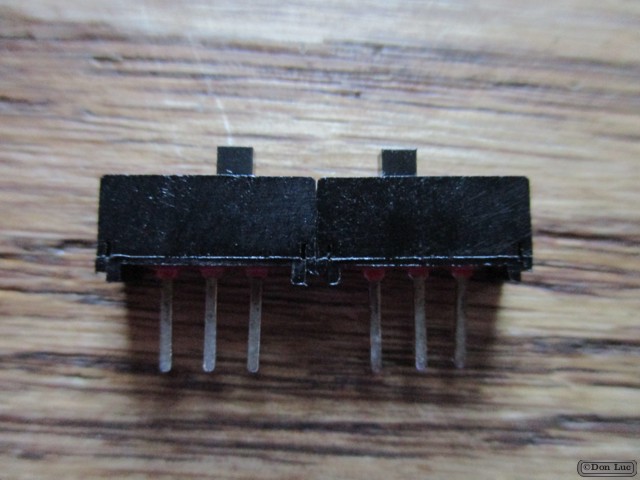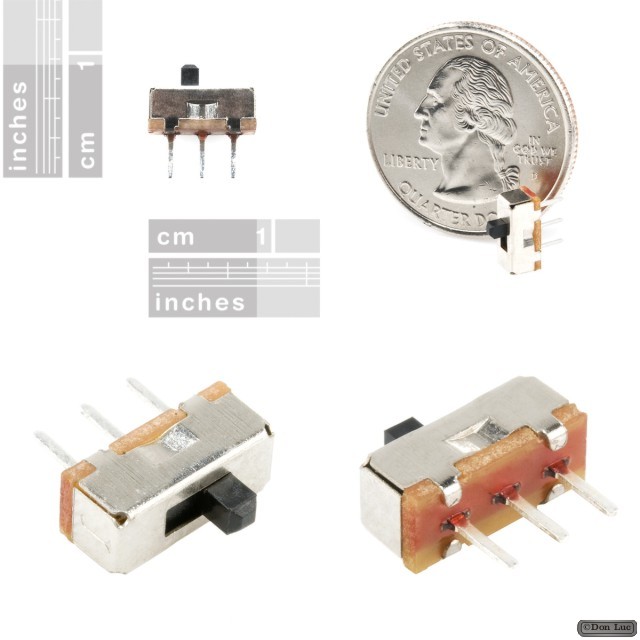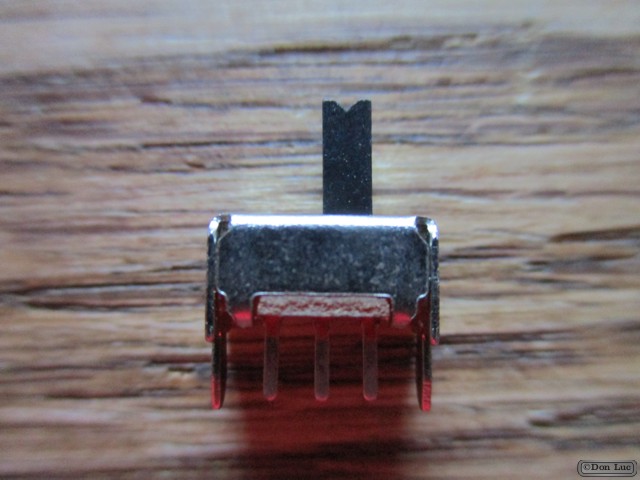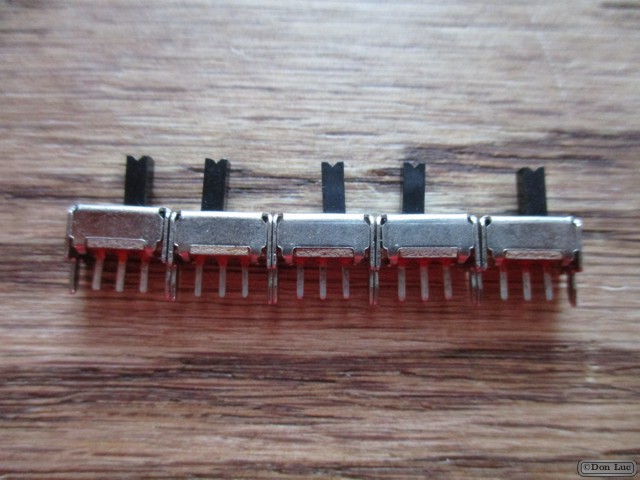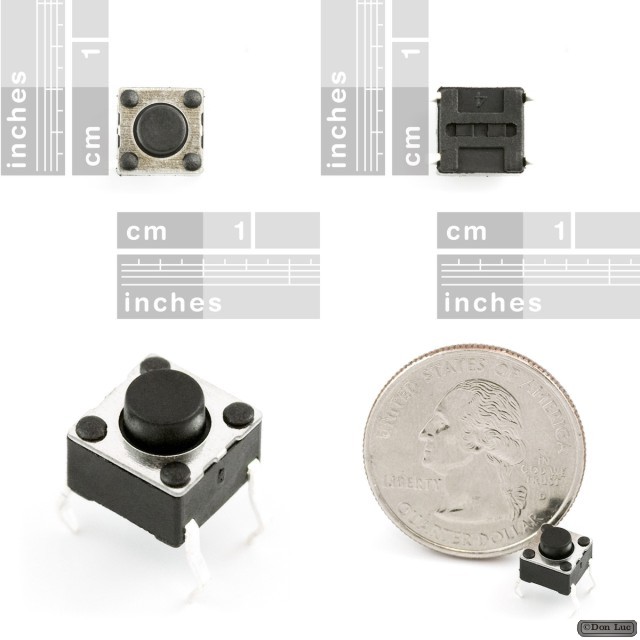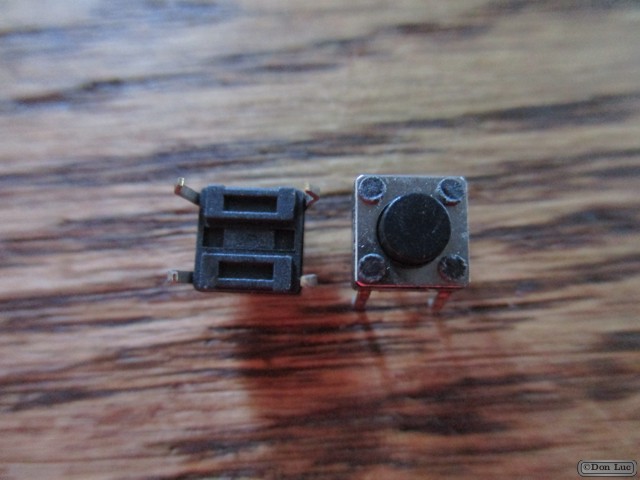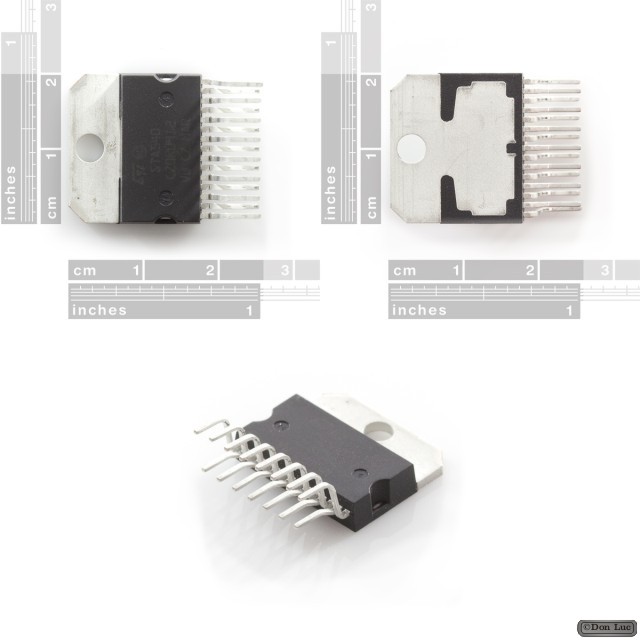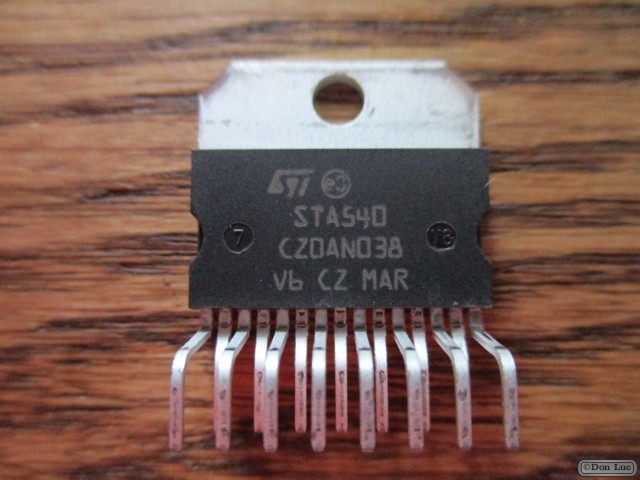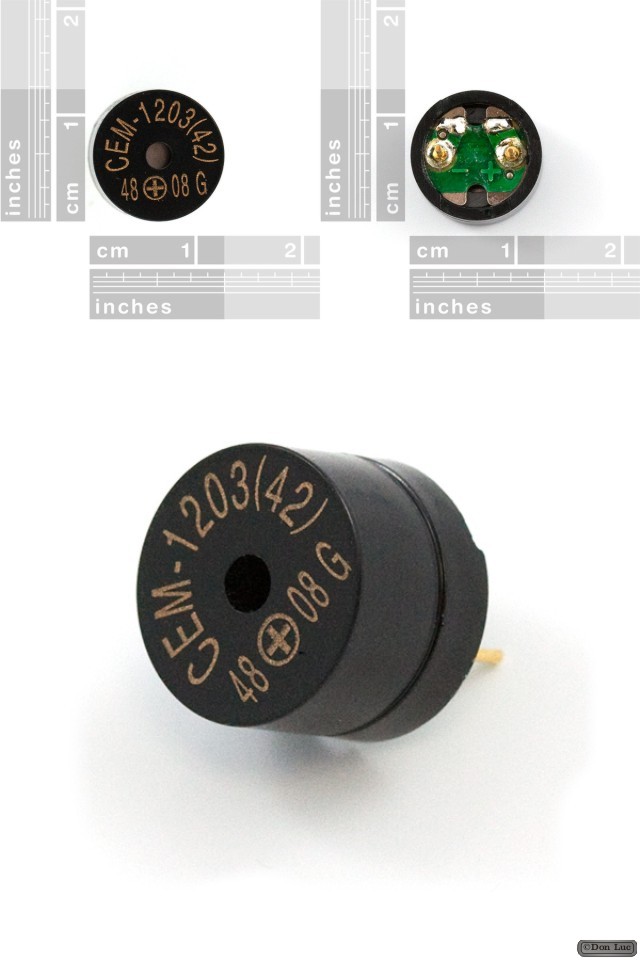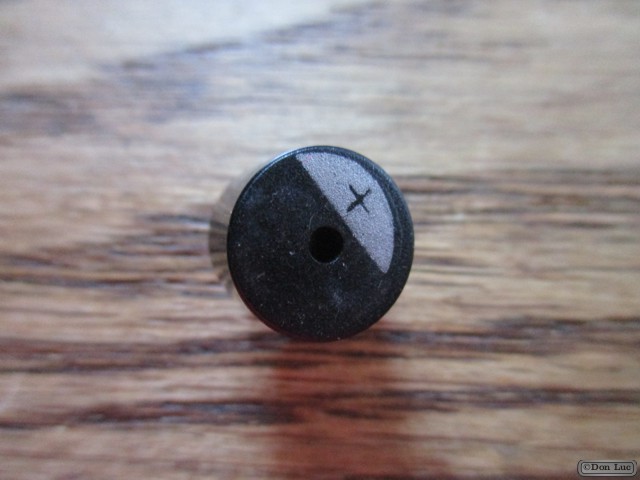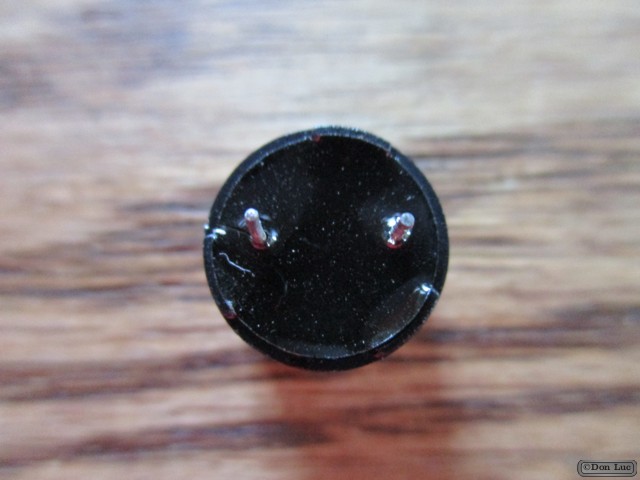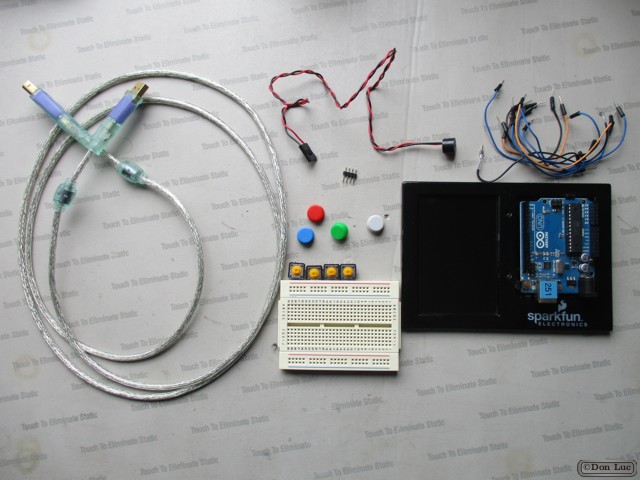
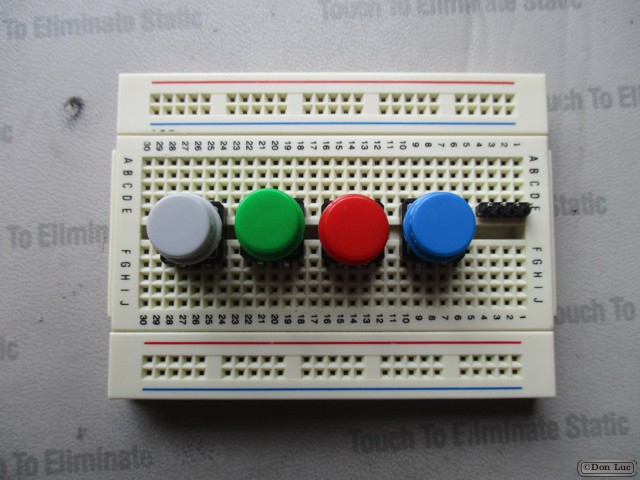
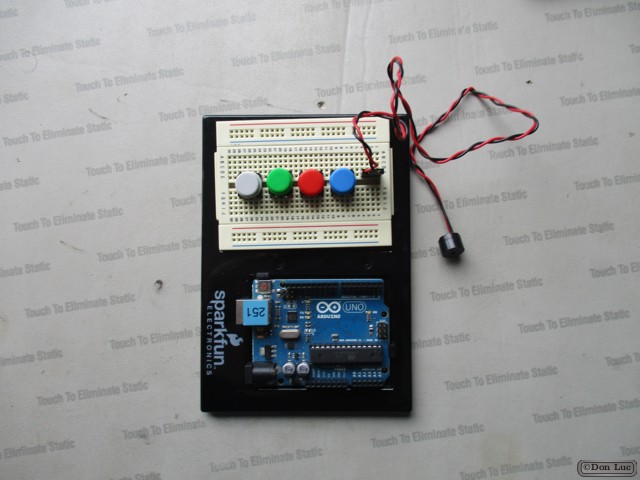
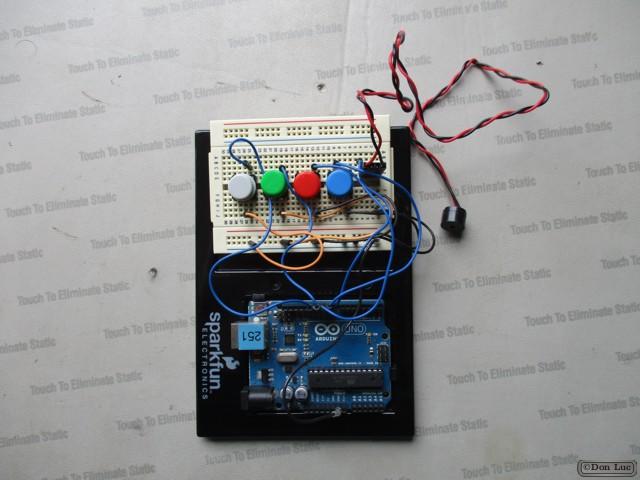
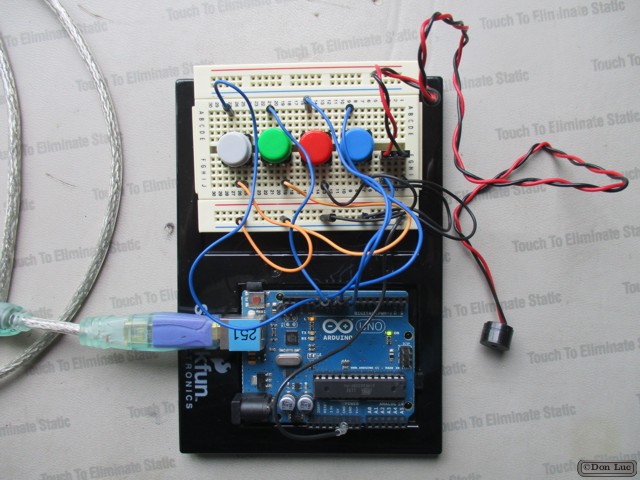
1 X Arduino and Breadboard Holder
1 X Breadboard
1 X Arduino UNO Rev3
1 X Speaker
11 X Jumper Wires Premium 3″ M/M
4 X Colorful Round Tactile Button Switch
1 X Cable
AcceleroSynthMk4.1.ino
// ***** Don Luc *****
// Software Version Information
// 4.1 Switch
// Which pin on the Arduino is connected pin 8?
// 8-ohm speaker
#define tonePIN 8
// Switch
int switchPin1 = 9;
int switchPin2 = 10;
int switchPin3 = 11;
int switchPin4 = 12;
boolean running = false;
// Pitches
#include "pitches.h"
void loop() {
if (digitalRead(switchPin1) == LOW)
{ // switch is pressed - pullup keeps pin high normally
delay(100); // delay to debounce switch
running = !running; // toggle running variable
tone(tonePIN, NOTE_C4, 100);
}
if (digitalRead(switchPin2) == LOW)
{ // switch is pressed - pullup keeps pin high normally
delay(100); // delay to debounce switch
running = !running; // toggle running variable
tone(tonePIN, NOTE_D4, 100);
}
if (digitalRead(switchPin3) == LOW)
{ // switch is pressed - pullup keeps pin high normally
delay(100); // delay to debounce switch
running = !running; // toggle running variable
tone(tonePIN, NOTE_E4, 100);
}
if (digitalRead(switchPin4) == LOW)
{ // switch is pressed - pullup keeps pin high normally
delay(100); // delay to debounce switch
running = !running; // toggle running variable
tone(tonePIN, NOTE_F4, 100);
}
}
pitches.h
{
/*************************************************
* Public Constants
*************************************************/
#define NOTE_B0 31
#define NOTE_C1 33
#define NOTE_CS1 35
#define NOTE_D1 37
#define NOTE_DS1 39
#define NOTE_E1 41
#define NOTE_F1 44
#define NOTE_FS1 46
#define NOTE_G1 49
#define NOTE_GS1 52
#define NOTE_A1 55
#define NOTE_AS1 58
#define NOTE_B1 62
#define NOTE_C2 65
#define NOTE_CS2 69
#define NOTE_D2 73
#define NOTE_DS2 78
#define NOTE_E2 82
#define NOTE_F2 87
#define NOTE_FS2 93
#define NOTE_G2 98
#define NOTE_GS2 104
#define NOTE_A2 110
#define NOTE_AS2 117
#define NOTE_B2 123
#define NOTE_C3 131
#define NOTE_CS3 139
#define NOTE_D3 147
#define NOTE_DS3 156
#define NOTE_E3 165
#define NOTE_F3 175
#define NOTE_FS3 185
#define NOTE_G3 196
#define NOTE_GS3 208
#define NOTE_A3 220
#define NOTE_AS3 233
#define NOTE_B3 247
#define NOTE_C4 262
#define NOTE_CS4 277
#define NOTE_D4 294
#define NOTE_DS4 311
#define NOTE_E4 330
#define NOTE_F4 349
#define NOTE_FS4 370
#define NOTE_G4 392
#define NOTE_GS4 415
#define NOTE_A4 440
#define NOTE_AS4 466
#define NOTE_B4 494
#define NOTE_C5 523
#define NOTE_CS5 554
#define NOTE_D5 587
#define NOTE_DS5 622
#define NOTE_E5 659
#define NOTE_F5 698
#define NOTE_FS5 740
#define NOTE_G5 784
#define NOTE_GS5 831
#define NOTE_A5 880
#define NOTE_AS5 932
#define NOTE_B5 988
#define NOTE_C6 1047
#define NOTE_CS6 1109
#define NOTE_D6 1175
#define NOTE_DS6 1245
#define NOTE_E6 1319
#define NOTE_F6 1397
#define NOTE_FS6 1480
#define NOTE_G6 1568
#define NOTE_GS6 1661
#define NOTE_A6 1760
#define NOTE_AS6 1865
#define NOTE_B6 1976
#define NOTE_C7 2093
#define NOTE_CS7 2217
#define NOTE_D7 2349
#define NOTE_DS7 2489
#define NOTE_E7 2637
#define NOTE_F7 2794
#define NOTE_FS7 2960
#define NOTE_G7 3136
#define NOTE_GS7 3322
#define NOTE_A7 3520
#define NOTE_AS7 3729
#define NOTE_B7 3951
#define NOTE_C8 4186
#define NOTE_CS8 4435
#define NOTE_D8 4699
#define NOTE_DS8 4978
}
setup.ino
void setup() {
// Switch
pinMode(switchPin1, INPUT);
digitalWrite(switchPin1, HIGH); // turn on pullup resistor
pinMode(switchPin2, INPUT);
digitalWrite(switchPin2, HIGH); // turn on pullup resistor
pinMode(switchPin3, INPUT);
digitalWrite(switchPin3, HIGH); // turn on pullup resistor
pinMode(switchPin4, INPUT);
digitalWrite(switchPin4, HIGH); // turn on pullup resistor
}
Don Luc

